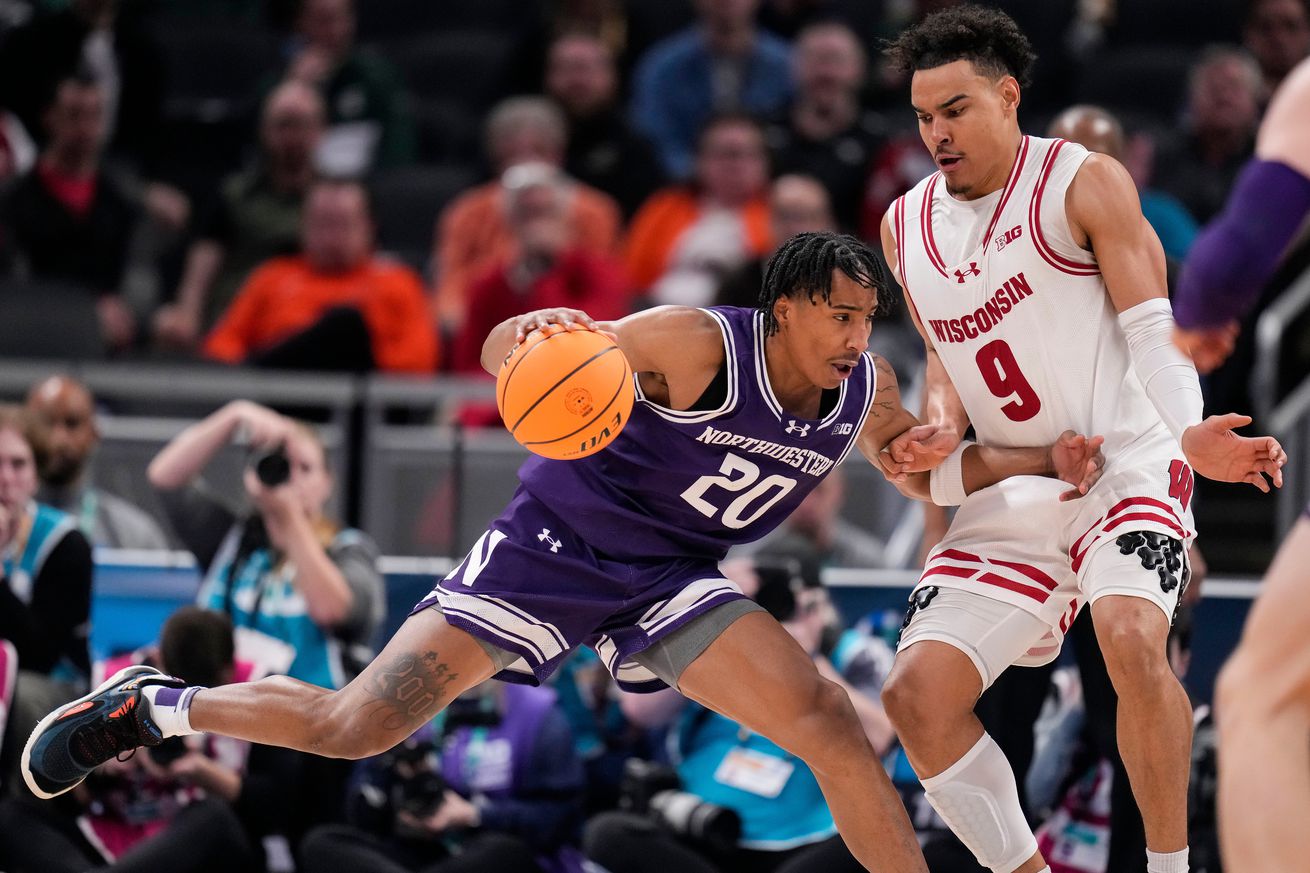
Mullins showed growth but also room for improvement after stepping into a starting role mid-season
Our run-down of men’s basketball player’s 2024-2025 season continues with Justin Mullins. Initially a reserve off the bench, Mullins saw his minutes skyrocket after he entered the starting lineup in light of injuries.
The Good
Mullins — a junior who grew up just 20 miles Southwest of Evanston in Oak Park, Illinois — had nowhere to go but up in his second season with NU. After averaging just 0.4 points and 0.6 rebounds per game in 2023-2024 on a mere five minutes per game, Mullins was bound to see an increase in playing time and a more prominent role within the ‘Cats’ nightly rotations.
For most of this season, he embraced a “sixth man” role as a primary ball handler and scorer off the bench. He took about three to five shots per game, converting on about 50% of them. Some days he would have only a bucket, some days he’d contribute eight points — but his performances still made an impact. He also flexed his defensive prowess through steals and forcing turnovers. This year, he recorded multiple games with over two steals, including a career high five steals in against Eastern Illinois.
It was his game against USC, however, that changed Mullins’ season. His 14-point performance on 5-of-6 shooting and 4-of-5 from three not only helped the Wildcats edge their new conference rivals, but also coincided with starters Jalen Leach and Brooks Barnhizer suffering season-ending injuries. Thus, the following game against Washington Mullins made his first career start at Northwestern— posting 13 points on another efficient 3-of-5 night from three.
When the ‘Cats were shorthanded, Mullins was ready to step up and deliver. He embraced his new role free of nerves and remained committed to helping his team. He continued to make a tangible impact as a starter, taking more shots and focusing more attention on the defensive glass and finding ways to help this teammates on both ends.
From averaging just five minutes to now playing 30 minutes a night, Mullins’s role took a huge leap in his junior year — both in production and dependability.
The Bad
While Mullins started final 12 games of the season, his production wasn’t always consistent enough to justify those minutes. While his shooting was impactful at times, it came largely in streaks — especially from deep. He went four straight games without making a three — all games where Northwestern could have used shooting from behind the arc to edge out conference rivals and revive its tournament hopes. His shooting percentage naturally declined as he took more shots, but he still struggled at times to generate enough consistent shotmaking, even when the ‘Cats desperately needed it.
Mullins also struggled to find other ways to get involved when his shot wasn’t falling. His rebounding per game only once exceeded three, and he regularly had only one or two assists per game. Considering the amount of playing time and number of touches he was getting, Mullins needed to step up at times and take a more proactive role as a frontline starter, especially on the offensive end. He wasn’t able to provide that routinely, and thus his role became less impactful and less valuable.
The Bottom Line
Much of NU’s rotation next season remains unknown, so it is not yet clear where Mullins will fit in to Chris Collin’s playbook. He will certainly see playing time and will be relied upon for his three point shooting and pesky defense, whether it be in the starting lineup or from the bench. After averaging 4.4 points a game this past season, getting that average closer to double figures would prove beneficial for a ‘Cats team that may rely on him more next season offensively.
To justify larger minutes and continue his growth, Mullins has to become more consistent as a scorer and find ways to make a tangible impact as a facilitator and rebounder. If Mullins takes these steps, it’s possible he sees more time in the starting lineup next season.